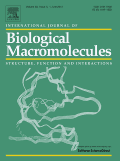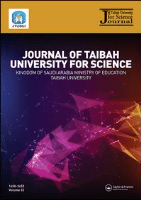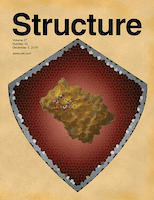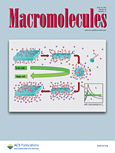
International Journal of Biological Macromolecules
metrics 2024
Advancing the Frontiers of Biological Macromolecules
Introduction
The International Journal of Biological Macromolecules, published by Elsevier, is a premier journal in the field of biological sciences, distinguished for its rigorous peer-review process and commitment to advancing research in biochemistry, molecular biology, and structural biology. With a Q1 categorization in multiple disciplines, including biochemistry and molecular biology, and an impressive Scopus ranking positioning it among the top echelons of its field, this journal is essential for researchers and professionals dedicated to exploring the complex interactions and applications of macromolecules. The journal, which has been publishing significant findings since 1979, provides a vital platform for disseminating innovative research that addresses critical challenges in various sectors such as medicine, agriculture, and materials science. Though it does not currently offer open access options, its impact on the scientific community is reflected in its H-index and percentile rankings, placing it firmly within the top tiers of its classification. By fostering a deeper understanding of biological macromolecules, this journal continues to contribute significantly to scientific knowledge and technological advancement.
Metrics 2024
 1.25
1.25 7.70
7.70 7.70
7.70 191
191Metrics History
Rank 2024
Scopus
IF (Web Of Science)
JCI (Web Of Science)
Quartile History
Similar Journals

ACS Macro Letters
Transforming Ideas into Impactful ResearchACS Macro Letters, published by the American Chemical Society, is a leading journal in the fields of Inorganic Chemistry, Materials Chemistry, Organic Chemistry, and Polymers and Plastics. Established in 2012, this journal has swiftly ascended to the forefront of chemical research with an impressive reputation, as evidenced by its 2023 Scopus rankings placing it in the first quartile across multiple categories. The journal's objective is to disseminate timely and concise articles that advance the study of macromolecules and their applications, making it an essential resource for researchers, professionals, and students alike. With a focus on fostering innovation and facilitating collaboration within the chemical community, ACS Macro Letters presents a robust platform for scientists to share their groundbreaking findings. Being based in the United States, it serves as a central hub for global discourse in the chemical sciences, although it does not currently offer Open Access options. The journal's commitment to high-quality content is further underscored by its prestigious impact factor and acceptance into elite academic quartiles, signifying its influence and importance in shaping future research.

Polysaccharides
Bridging Disciplines in Polysaccharide StudiesPolysaccharides is a leading academic journal published by MDPI, specializing in the interdisciplinary field of polysaccharide research. Since its inception in 2020, this Open Access journal aims to facilitate the dissemination of groundbreaking research in materials science, chemistry, and engineering. With an impressive ranking among the top-tier journals—holding the 29th position in Engineering, the 20th in Chemistry, and the 42nd in Materials Science according to Scopus—it offers a significant platform for researchers and professionals seeking to enrich their understanding of polysaccharides' properties, applications, and innovations. The journal welcomes contributions that advance knowledge in polysaccharide chemistry, structural analysis, and various applications in pharmaceuticals, food sciences, and biomaterials. Located in the heart of Basel, Switzerland, Polysaccharides is poised to be a critical resource for anyone looking to stay at the forefront of polysaccharide research and applications, with publications openly accessible to a global audience.

Proteomes, published by MDPI since 2013, is a notable open access journal that occupies a critical place in the realms of Biochemistry, Clinical Biochemistry, Molecular Biology, and Structural Biology. Based in Switzerland, this journal not only promotes the dissemination of high-quality research pertaining to protein structures and functions but also emphasizes interdisciplinary approaches that bridge various fields of biomedical science. With a Category Quartile ranking of Q2 across multiple pertinent categories in 2023, Proteomes boasts a competitive impact within the scientific community, evidenced by its robust Scopus rankings. Researchers, professionals, and students are invited to explore a wealth of pioneering studies and reviews that are made freely accessible, aligning with global trends in open scientific communication. Whether contributing original research or seeking to expand their knowledge, the journal serves as an invaluable resource for anyone engaged in the evolving landscape of proteomics.

BIOINORGANIC CHEMISTRY AND APPLICATIONS
Championing the synergy of biochemistry and inorganic research.BIOINORGANIC CHEMISTRY AND APPLICATIONS, published by HINDAWI LTD, is a distinguished journal dedicated to advancing the field of bioinorganic chemistry, offering an open access platform since 2008. With an ISSN of 1565-3633 and E-ISSN of 1687-479X, this journal provides a global forum for researchers, practitioners, and scholars in the vibrant fields of Biochemistry, Inorganic Chemistry, and Organic Chemistry. Recognized for its scholarly impact, it holds an impressive Q2 rank in Biochemistry and Q1 ranks in both Inorganic and Organic Chemistry in the 2023 metrics. Catering to a diverse audience, the journal emphasizes the importance of interdisciplinary research and the application of inorganic chemistry in biological systems. With an accessible range of articles aimed at fostering scientific dialogue and innovation, BIOINORGANIC CHEMISTRY AND APPLICATIONS plays a crucial role in shaping future research and application in the chemical sciences.

BIOCHEMICAL AND BIOPHYSICAL RESEARCH COMMUNICATIONS
Fostering innovation in biochemical and biophysical research.BIOCHEMICAL AND BIOPHYSICAL RESEARCH COMMUNICATIONS, published by Academic Press Inc Elsevier Science, stands as a leading periodical in the fields of biochemistry, biophysics, cell biology, and molecular biology. With an ISSN of 0006-291X and an E-ISSN of 1090-2104, this esteemed journal has been a pivotal platform for the dissemination of groundbreaking research since its inception in 1959, continuing to publish influential findings through at least 2024. It holds a commendable Q2 ranking in Biochemistry and Q1 status in Biophysics as of 2023, reflecting its high impact and relevance in the field, supported by its strong Scopus rankings—ranking #43 in Biophysics and maintaining a presence in the top quartiles of several related categories. Although it is not an open-access journal, it provides critical insights and essential data that cater to researchers, professionals, and students keen on advancing their understanding of complex biochemical and biophysical processes. Its significant contributions to the scientific community underscore the importance of this journal as a reference point for innovative research and collaborative discourse.

Journal of Taibah University for Science
Exploring Multidisciplinary Insights for a Sustainable FutureJournal of Taibah University for Science, published by TAYLOR & FRANCIS LTD, is an esteemed Open Access journal that has been contributing to the fields of Agricultural and Biological Sciences, Biochemistry, Molecular Biology, Chemistry, Earth and Planetary Sciences, Environmental Science, Mathematics, and Physics and Astronomy since 2006. With a commendable impact reflected in its Scopus rankings—standing as high as #10 in Mathematics and #27 in Agricultural and Biological Sciences—the journal maintains a robust reputation in scholarly communication. It processes the latest advancements in multidisciplinary research, shedding light on pressing global challenges, while fostering a dynamic academic exchange. Researchers and professionals looking to stay at the forefront of scientific discourse will find valuable insights and innovative findings in this well-respected publication. The journal is converging its content from 2008-2024, ensuring a rich repository of knowledge that is vital to ongoing and future research efforts.

STRUCTURE
Fostering groundbreaking insights into molecular mechanisms.STRUCTURE is a premier academic journal published by CELL PRESS, dedicated to advancing the field of structural biology and molecular biology since its inception in 1993. With an impressive reputation, it is recognized as a Q1 journal in both Molecular Biology and Structural Biology categories, reflecting its high impact within the academic community. The journal holds a significant position in Scopus rankings, placing 10th among 49 in Structural Biology and 100th among 410 in Molecular Biology, marking it as a key resource with a strong influence on ongoing research. Researchers and professionals alike will find STRUCTURE an invaluable platform for disseminating cutting-edge findings related to protein structure, dynamics, and interactions, fostering insights that can lead to groundbreaking applications in medicine and biotechnology. Although the journal follows a traditional subscription model, it continues to attract a diverse array of submissions, ensuring a vibrant exchange of knowledge in the ever-evolving landscape of structural and molecular biology. Access to its content can enhance the understanding of intricate biological mechanisms, making it essential reading for experts, students, and anyone passionate about the molecular underpinnings of life.

MOLECULAR BIOTECHNOLOGY
Exploring the Frontiers of Molecular InnovationMOLECULAR BIOTECHNOLOGY, published by SPRINGERNATURE, is a pivotal journal in the fields of applied microbiology, molecular biology, biochemistry, and biotechnology. Since its inception in 1994, the journal has aimed to disseminate high-quality research that explores the intersection of molecular biology and technology, fostering advancements in biotechnology applications. With an ISSN of 1073-6085 and an E-ISSN of 1559-0305, it has established itself as a significant contributor to the scientific community, currently holding a Q3 ranking across multiple categories including Applied Microbiology & Biotechnology and Biochemistry in the 2023 metrics. Although not an open access publication, the journal remains accessible through various institutional subscriptions, providing valuable insights and findings to researchers and professionals. Given its ongoing commitment to quality and relevance, MOLECULAR BIOTECHNOLOGY serves as an essential resource for those involved in cutting-edge research and innovation in molecular biotechnology and related disciplines.

MACROMOLECULES
Innovating Materials for a Sustainable FutureMACROMOLECULES, published by the American Chemical Society, is a premier journal in the fields of inorganic chemistry, materials chemistry, organic chemistry, and polymers and plastics. Since its inception in 1968, this influential journal has established itself as a vital resource for researchers, professionals, and students, showcasing cutting-edge research and advancements in the study of macromolecules and high-performance polymers. With a distinguished impact factor and consistently ranking in the top quartiles (Q1) across its relevant categories, MACROMOLECULES is recognized for its high-quality publications that contribute significantly to the scientific community. The journal is accessible in both print and electronic formats, facilitating rapid dissemination of knowledge. By providing a platform for innovative studies and groundbreaking discoveries, MACROMOLECULES continues to play a crucial role in shaping the future of materials science and polymer research.

FEBS Open Bio
Nurturing collaboration in the evolving landscape of biosciences.FEBS Open Bio is a leading open-access journal published by Wiley, dedicated to advancing our understanding of biochemistry, genetics, and molecular biology. Since its inception in 2011, this journal has provided a robust platform for researchers to share their findings with a wider audience, ensuring the dissemination of high-quality scientific knowledge. With an impact factor reflecting its stature in its field, FEBS Open Bio is ranked #77 out of 221 in general biochemistry, genetics, and molecular biology, placing it in the 65th percentile among its peers. This journal serves as an essential resource for professionals, researchers, and students alike, fostering collaboration and innovation within the scientific community. The commitment to open access not only enhances visibility but also promotes transparency in research, making it a vital contributor to the ongoing dialogue in biochemical and molecular biological sciences. For those looking to stay at the forefront of research developments, FEBS Open Bio is a key publication addressing the latest trends and discoveries in the field.